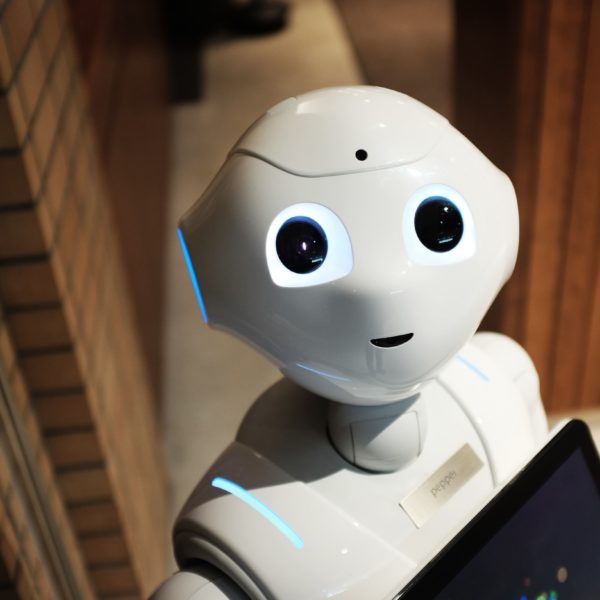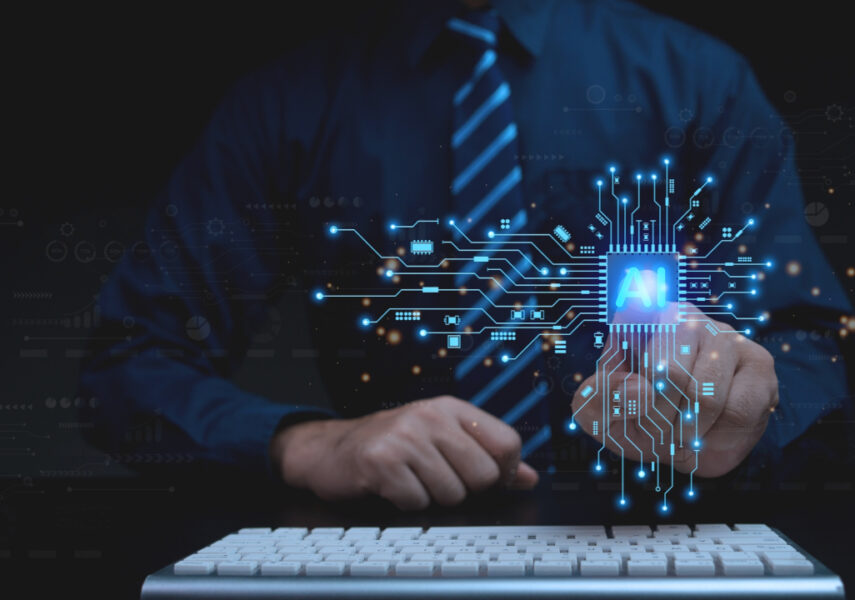The future is here! Progress in technology development, security issues, data analysis needs, medical emergencies, privacy issues, sustainability, network access, and communication have all fueled the newest technological trends.
Technology has the potential to reinvent and transform how we run business in a more and more connected world. Even though the COVID-19 pandemic’s restrictions on mobility and assembly blocked IT initiatives, there are still a lot of cutting-edge technologies to keep an eye on in 2022.
Here is the ten of them. Some of them you’ll find fascinating and some of them are absolutely mindblowing!
Metaverse
The Metaverse, often referred to as the next stage in social connectivity, was highlighted by Facebook’s name change to Meta. The Metaverse is a computer-generated world where you’ll be able to do everything you can do on the internet, including work, dating, and entertainment. However, your experience will be far more interactive and engaging.
Whether or not the Metaverse will be a parallel reality or an additional layer on top of the current one is still up for debate. To put it another way, Virtual Reality (VR) or Augmented Reality (AR) might be used there.
Sales of Metaverse real estate reached $501 million last year and have already hit $85 million this year. Blockchain technology (which we’ll discuss later in this article) allows people to own these virtual assets as well as buy stuff in-game. Nevertheless, the use of blockchain technology to create an interactive, shared world like a Metaverse has yet to be determined.
Quantum computing
Optimization, in the realm of mathematics, is what quantum computing specialists work with. It’s when you evaluate numerous possibilities to find the best solution — such as which medicines combine the best, which stocks to invest in, or how to build electric cars in a low-priced way.
On a large scale, these estimates might take months since old computers must go through all potential combinations one by one. In contrast, quantum computers handle them all at the same time, giving results in a far shorter time period.
For example, it takes only a second for IBM’s new Quantum Computer to solve a combinatorial computation, when a regular computer will waste a whole week to do so.
AI-powered cybersecurity
Cybersecurity companies are scrambling for technological answers to the security gaps, with a rise in email phishing scams, cyberattacks, and ransomware. Lawbreakers hack key infrastructure in several countries, people’s personal accounts, small and large businesses daily, resulting in million-dollar damage. Following the COVID-19 virus, it became more important than ever to educate staff on internet safety to minimize failures and data breaches.
Companies are also using new cybersecurity technologies (artificial intelligence for example) to monitor and defend networks in real-time rather than reacting to the danger after it has occurred. Furthermore, cloud storage businesses are now providing end-to-end encryption for data transfers and storage on the internet.
Internet of Behaviors (IoB)
Service providers gather a lot of consumer data through IoT devices in the home. Companies are employing analytics and big data approaches to establish the worth of information as part of what is rapidly being called the Internet of Behaviors (IoB).
Businesses use customer information to improve the client experience, promote their goods, and personalize their services through these insights. While customized solutions are crucial, in order to create them, firms deal with a struggle persuading consumers to share sensitive data.
Users are concerned about compromising their privacy in exchange for useful products. They also dislike having their personal information exploited by hackers and other cybersecurity problems. Therefore, businesses’ data analysis requirements will call for a different method of data collection.
Injectable chips
In May 2021, a team of academics at Columbia University released a study describing the tiniest microchip ever created. It’s the size of a dust mite, and it can only be seen using a microscope. What’s more, it functions as a standalone system without the need for additional gadgets or wires.
The chip is a medical device that gathers biological data from the body part where it’s inserted. Ultrasound provides power and communications to the device. This will be ground-breaking for creating small, wireless implantable medical gadgets with embedded sensors that can detect various things, including drug development and clinical usage.
DNA editing
CRISPR (short for “clustered regularly interspaced short palindromic repeats”) is a method of editing DNA that makes use of two key molecules. Cas9 is the first molecule, which serves as biological scissors. It can cut DNA in specific locations, allowing for modifications (removal, change, or addition). The second molecule is an enzyme that serves as a GPS to help guide the activity of Cas9 scissors.
The most popular use of CRISPR is to delete or replace harmful genes in order to cure disease. There are no generational effects, eliminating the fear of disrupting human genetics.
In September 2021, two CRISPR experiments were successful in reversing blindness. When a red vehicle passed one of the patients just over a month later, he was able to see colors for the first time in years. Injections were used for the first time in these studies. Typically, researchers extract sick cells from patients’ bodies, alter them in a lab, and implant them back. The discovery guarantees less invasive therapies for those who undergo a wrong gene distribution.
Blockchain
Nowadays blockchain technology is beginning to look like a viable option for several tech problems.
Blockchain is a distributed data ledger that supports cryptocurrencies and other digital payment systems, as well as blockchain gaming and encryption technology. Non-fungible tokens (NFTs), which are blockchain data units that are not convertible, are becoming increasingly popular among content producers who use them to create digital work, sell it online, and earn cryptocurrencies.
Blockchain’s ledger functionality is allowing the technology to be used for keeping medical data and other personal records, title deed owners, NFT trading, copyright protection, transaction tracking, and supply chain monitoring.
Telepathy by Neuralink
In 2021, Neuralink researchers implanted 1,024 ultra-thin electrodes into the brain of a macaque named Pager. This adorable monkey was linked to a computer by an interface.
Pager then spent several hours playing a simple game to fine-tune Neuralink’s algorithms. After some time Neuralink was able to decipher the Pager’s intentions, allowing him to play Pong through telepathy.
The next goal for the firm is to enable paralyzed people to use computers and phones using only their brain activity. Because these people are unable to click a mouse or control a joystick, mental activities such as visualizing hand motions will be used for the calibration.
Near-term, Neuralink plans to use its technology to allow people to interface with AI and even transfer their brains into a computer. Both endeavors will need a significant amount of computing power, which we’re making progress in thanks to quantum theory mentioned earlier in the article.
Smart clothes
An outfit that interprets your movements and suggests improved postures might be a good idea. Consider it a winter glove with an added remote control function.
The Smart Clothes group at MIT developed wearable textiles that can sense pressure. After this, the data is gathered and analyzed by an algorithm, turning it into potential applications that, however, aren’t just for humans. Robots will benefit from it as well. They will be able to inspect their surroundings more effectively and automatically correct mistakes when they move about thanks to smart clothing.
Telehealth
Another consequence of the epidemic has been a boost in telehealth services, which include remote doctor-patient consultations, monitoring, evaluation, and diagnosis. People with mental health issues may also seek assistance via online counselors.
Cutting-edge telecare health monitoring gadgets measure changes in a person’s lifestyle and internal body conditions, allowing them to foresee future health issues like diabetes or heart problems. Surgical and telemedicine robots are two technologies that are enhancing contactless patient communication.
The telehealth industry is also using machine learning (ML) technology. The AI may sift through data to identify individuals who should participate in telehealth programs and send notifications if a patient’s health indicators surpass a defined threshold. As a result, physicians can have more control over their patients’ treatment day-to-day.
Concluding thoughts
The COVID-19 epidemic has had a major influence on technology development in the previous two years. People have become more aware of upgrading healthcare and treatment access, as well as security, e-commerce, and online payments.
Besides, supporting the environment and promoting sustainable technologies are good for the planet’s future. Collaborative and educational technologies will continue to alter how we work and study, and artificial intelligence may be of assistance in deciding the best path someday in the future.
The Crunch team keeps up with trends! We work with leading technologies to create ground-breaking solutions for our clients. Recently, we have enjoyed working on an automotive project for a famous European sportscar dealer.
Read the full automotive case: Driver assistance system.
Contact us if you’re looking for cutting-edge software solutions! We’ll be more than happy to collaborate with you.







![10 Top DevOps KPIs to Track [and no more] - Crunch.is](https://crunch.is/wp-content/uploads/2023/03/03-855x600.png)
